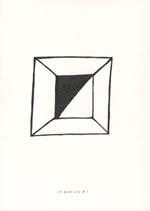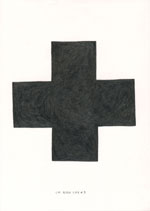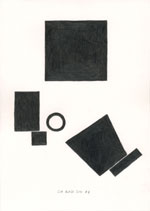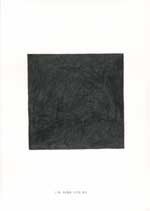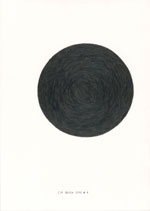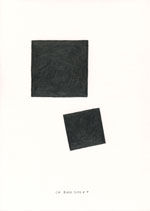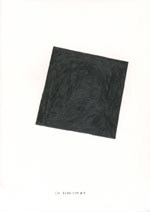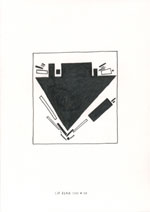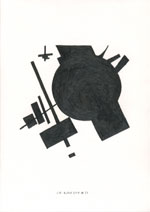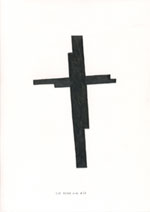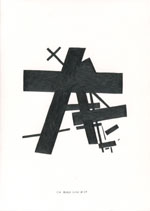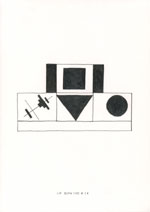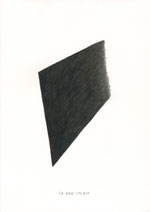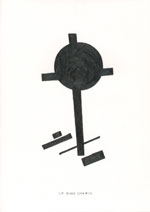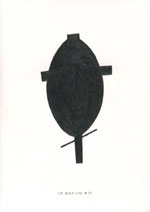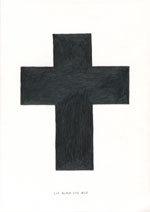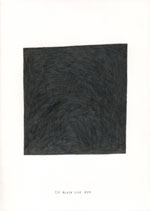Suzanne
Treister
2010
20
CIA BLACK SITES
Grid of 20
works, each 21 x 29.7
pencil on paper
|
Kasimir Malevich/Kazimir Malewicz was born in 1879 near Kiev in the Kiev Governorate of the Russian Empire. His parents, Seweryn and Ludwika Malewicz, were ethnic Poles. After the Revolution, Russian intellectuals hoped that human reason and modern technology would engineer a perfect society. Malevich was fascinated with technology, and particularly with the airplane, instrument of the human yearning to break the bounds of earth. He studied aerial photography. For Malevich, that realm, a utopian world of pure form, was attainable only through nonobjective art. Indeed, he named his theory of art Suprematism to signify "the supremacy of pure feeling or perception in the pictorial arts"; and pure perception demanded that a picture's forms "have nothing in common with nature." Malevich imagined Suprematism as a universal language that would free viewers from the material world.1 |
click individual images above for enlargements |
||||||||||||||||||||
|
Malevich, along with Wassily Kandinsky and Piet Mondrian are considered to be the first artists to have achieved a truly abstract painting language and can be seen as primary precursors to the American post-World War II art movement Abstract Expressionism. The McCarthy era was a time of artistic censorship in the United States and it has been argued by revisionist historians - although Abstract Expressionist work was condemned by one politician as being coded maps to such sensitive U.S. sites as Hoover Dam - that in the early 1950s the CIA saw it as representative of the USA as a haven of free thought and free markets, as well as a challenge to both the socialist realist styles prevalent in communist nations and the dominance of the European art markets. The book by Frances Stonor Saunders, The Cultural Cold War- The CIA and the World of Arts and Letters, details how the CIA financed and organized the promotion of American abstract expressionists as part of cultural imperialism via the Congress for Cultural Freedom from 1950-67.2 Between the years 1972 and 1995 in the USA, inspired by the psychic abilities of the New York artist Ingo Swann, the CIA funded a 'Remote Viewing' program at Stanford Research Institute in California and at Fort Meade in Maryland, where trained psychic spies attempted to use remote viewing to identify and draw remote and inaccessible sites, primarily in the Soviet Union/Russia, such as missile silos, submarines, POWs, and MIAs. 'Black
Sites' is the name given to CIA run secret research facilities and
secret detention facilities, where enhanced interrogation techniques
are used on high value detainees. These sites are erased by the
CIA from aerial satellite imagery before it is made publicly available
on the Internet or elsewhere so that the facilities show up as blanks
on the map. While the U.S. has generally refused to disclose the
locations of these facilities, the specifics have slowly leaked
out. A recent study found evidence confirming CIA "black sites"
in 20 locations around the world, including Thailand, Poland, Romania,
Lithuania, Afghanistan and Kosovo.3 1.
http://www.moma.org/collection/object.php?object_id=80385
|
|||||||||||||||||||||

